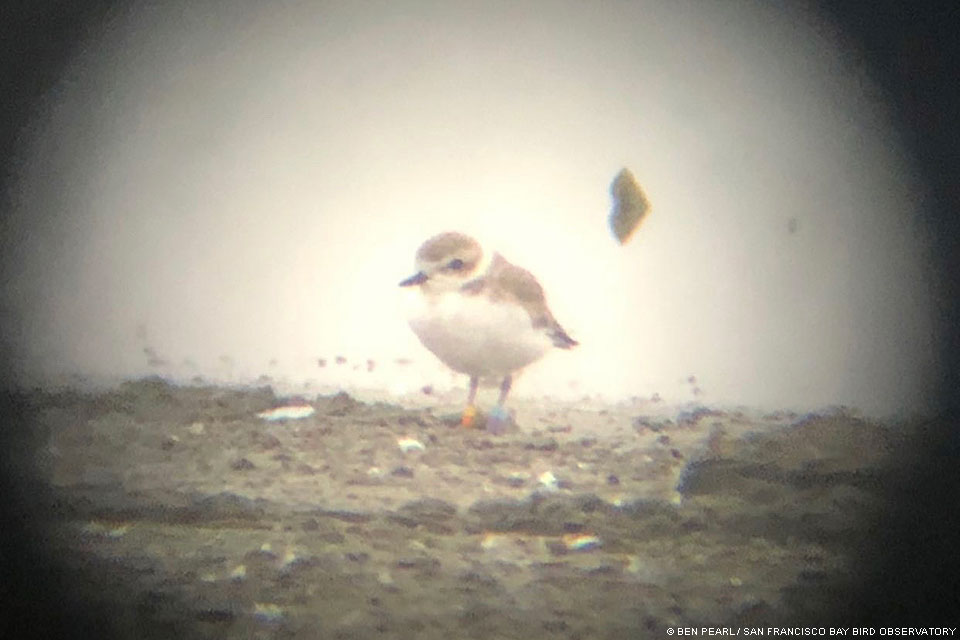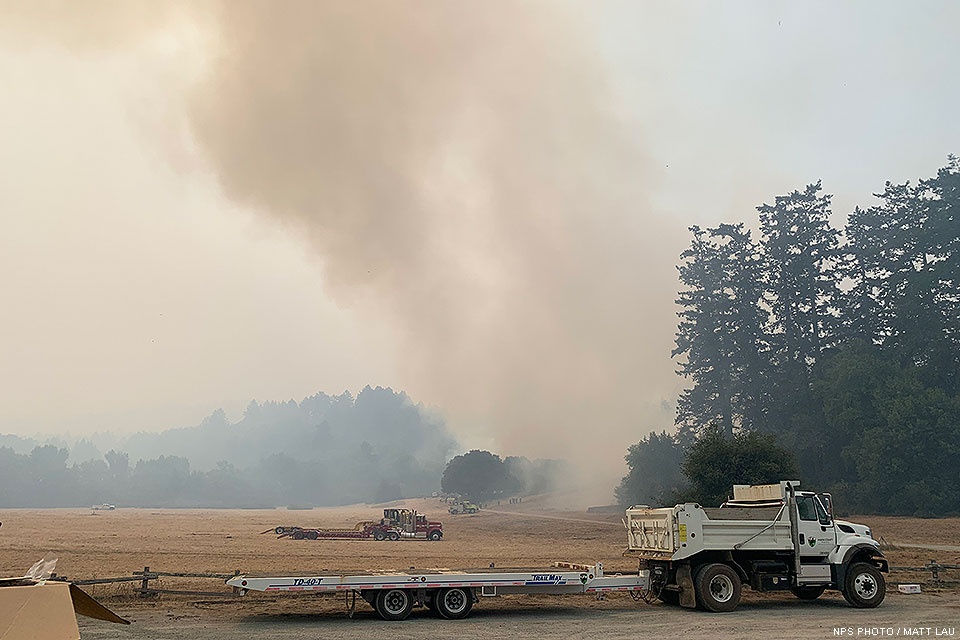Overview
Wow, what a year! Despite the feeling that the world is falling apart, the snowy plovers continue going about their daily activities on the beach. The Woodward Fire that was sparked by a lightning strike on August 18, like other fires currently ravaging the West, has caused disruption and anxiety to our communities and daily routines. The plover monitoring program in Point Reyes has largely been on pause for about a month since the fire started.
The last two nests of the season hatched just as the Woodward Fire began; one of these broods was banded while the second brood hatched without the usual banding process. We have not been able to survey to locate these two broods on North Beach until late last week and have unfortunately been unable to locate them. We will continue searching for these chicks for the remainder of the week until we feel confident that the hatchlings did not survive.
That being said, we have ended the season with 10 fledglings from 39 nests! Considering the abysmal low survival rate for chicks and nests during the first half of the season, we can consider this a success. The next few weeks will involve regular surveys of winter flocks that have coalesced on Point Reyes beaches to find and identify banded plovers, and starting the laborious extraction of symbolic fencing and nest exclosures from beaches. We are crossing our fingers for a mild winter season for these plovers and we hope to see many of them breeding here next season!
Here are updates organized by beach sites:
Kehoe (K)
This site had a total of six nests this season, all concentrated at the north end of Kehoe Beach (approximately one mile south of the Kehoe Trail mouth). Three of these nests hatched and produced three fledglings. This is astounding, considering this site has the highest raven activity in the park!
Abbotts Lagoon Restoration Area (RA)
We detected very little breeding activity on this site. Early in the season, after returning to survey after a month off due to Shelter-In-Place orders, biologists found a failed nest at the south end of this site. They found a single depredated egg near a nest scrape with raven tracks leading up to it. Subsequent surveys found no observations of plovers breeding here.
Abbotts Lagoon to North Beach parking lot (NP)
Biologists observed 22 nests here this season. A majority of these nests were within 1.5 miles of North Beach parking lot. Eleven of 22 nests survived to hatch, producing four fledglings. We are unsure why chick survival was extraordinarily low for this site. Notably, all eleven nests that hatched were exclosed. We believe reproductive success on this site would've been much lower if not for these nest exclosures protecting the eggs from common ravens and other predators.
North Beach (NB)
We observed four nests on this site, all in April and May. All four nests were depredated by common ravens. Snowy Plover breeding activity was not observed on this site after May; we believe plovers decided to move north into the NP sector to breed for the remainder of the season.
South Beach (SB)
Biologists found three nests on this site, the first located nests here since the 1980’s! One nest was lost to a common raven early in the season, but the other two nests hatched and produced three fledglings; both hatched nests were protected with an exclosure. All three nests were located very close to the parking lot and likely benefited from the public closure for most of the breeding season.
Limantour (L)
Biologists found only three nests here, a significant decline in plover breeding activity compared to recent years. A single pair was found breeding here and were owners of all three nests found. Fortunately, we observed large winter flocks forming here before Limantour Road closed in early August.
If you have any questions, please contact Matt Lau, the park's Snowy Plover Ecologist, via email.
Current Stats
- 39 nests so far this season
- 0 active nest
- 17 hatched
- 22 failed nests
- 3(?) chicks on the beach
- 10 chicks fledged
 A North Beach juvenile (av:yo) that fledged in early June, observed with a winter flock at Eden Landing Ecological Reserve within San Francisco Bay!
A North Beach juvenile (av:yo) that fledged in early June, observed with a winter flock at Eden Landing Ecological Reserve within San Francisco Bay!
 Smoke rises from a backfire (or back burn) started by firefighters along the Bear Valley Trail on August 29, 2020.
Smoke rises from a backfire (or back burn) started by firefighters along the Bear Valley Trail on August 29, 2020.
The National Park Service shall not be held liable for improper or incorrect use of the data described and/or contained herein. These data and related graphics (if available) are not legal documents and are not intended to be used as such. The information contained in these data is dynamic and may change over time. The National Park Service gives no warranty, expressed or implied, as to the accuracy, reliability, or completeness of these data. For more information: https://www.nps.gov/disclaimer.htm
